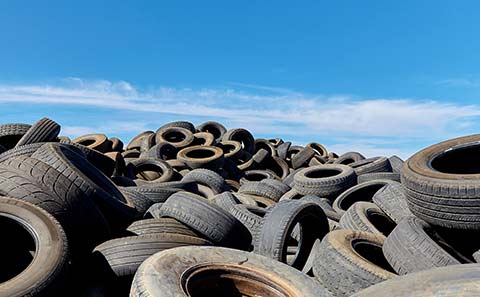SUVs and crossovers may be dominating the current U.S. car market, but will there ever be a time when Americans don’t drive pony cars?
Let’s hope not. Ford, even when it announced that almost its entire lineup would become crossovers, SUVs, and trucks, said the Mustang would remain. America’s variant of the sports coupe started in 1965 with the Ford Mustang. It was an instant and overwhelming hit, selling 686,000 units between the 1964½ and 1965 models. Through 1966, sales surpassed 1.2 million.
Chrysler soon introduced the Plymouth Barracuda and the Dodge Challenger, and General Motors introduced the Chevrolet Camaro and Pontiac Firebird. The Mustang, Challenger, and Camaro are still in production.
A long hood, short deck, and a lot of available horsepower characterize pony cars. The simple fact, though, is that most of these cars were rather tame, with old-fashioned inline 6-cylinder engines and in some years, 4-cylinders.
The Pony Car Look
In the 1960s and 1970s, many pony cars—even 6-cylinder “secretary” versions—had upgraded wheels and raised white-letter tires. Today, pony cars look less “boy racer” but are more powerful than ever. Even those with 6- and turbocharged 4-cylinder engines outperform V8s of just a dozen years ago.
Pony cars now have black walls, with RWL tires shifting to off-roaders. Some ponies, especially the biggest performers, have summer tires, but most roll on all-season radials.
Speed Ratings
Tires on any pony car today handle better, manage rain better, generate traction in light snow if all-season, are quieter, and last much longer.
Important: Remember the speed rating of your original equipment tire. Buy a speed rating at least equal to what was on the car when new.
Many pony cars have governors that limit how fast the car will go, even if the engine can make enough horsepower to go faster. Manufacturers limit top speed to match tire and suspension capability. Price plays a role. The less-capable suspension, smaller wheels and slower tires are all cheaper to boost new-car sales. Governed speeds also lower insurance premiums.
Pony cars with more powerful engines, heavier springs, stiffer shocks and bigger antiroll bars typically have tires with higher speed ratings.
If your pony car is modified, get a speed rating that matches your car’s capabilities. That’s absolutely critical if you take your car to the track, drive it on a private course, or participate in timed events, such as autocrosses.
Tires for Vintage Pony Cars
Coker Tire makes 1960s- and 1970s-era Firestone Wide Oval bias-belted tires, with nylon cords and fiberglass belts, popular on performance Mustangs of day. If you enter your restored car in concours-level competitions, such tires gain points. You’ll pay for the privilege: about $300 per tire.
You can also get Coker-manufactured Goodyears and Goodriches from that era. A Goodyear Blue Dot, standard on original and some 1966 Shelby GT 350s, goes for nearly $500 a tire. It’s a 2-ply nylon bias tire, not even belted. Coker also manufactures bias-ply red-stripe tires, which were standard on 1960s Pontiac GTOs, Chevrolet Camaros and other GM performance cars, and BF Goodrich Radial T/As from the 1970 and ’80s.
These tires occasionally show up used. You’ll have to check inventory.
Modern Pony Car Tires
Many modern touring and performance tires at TireMart.com fit pony cars, in summer or all-season versions. They’re often available used or in never-mounted examples in sets of two or four.
Some performance tires—Goodyear Eagle F1, Pirelli P Zero, Michelin Super Sport, Bridgestone Potenza, and Alenza—can go right from the street to the track. Depending on size, they’ll work on the Shelby GT 500, Camaro ZL1, and Challenger Hellcat. Tires from those manufacturers and others, including Yokahama, Falken, and Firestone, will perform well on milder pony cars.
How To Fit Your Pony Car
Click on the Visit Shop label near the top of the page and fill in the blanks. Choose one of the three ways to browse:
- By size: If you know your tire size, fill in the width, sidewall (aspect ratio) and wheel size. You also can pull down a menu and click a tire brand; leave it blank to bring up all brands of that size in stock.
- By Vehicle: Fill in your year, make and model. The “Option” menu brings up different trim levels; click on one and the search engine finds the appropriate size in-stock tires in all brands.
- By Brand: Choose a tire brand from the pull-down menu. Then choose a tire line from the model menu. All the in-stock tires of that brand appear, but you’ll have to find your size in the search results.


